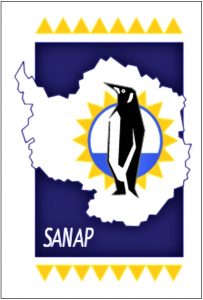
 The South African National Antarctic Programme (SANAP) manage a station on Gough Island as on Marion Island and Antarctica. By leasing the land on which the station was built from the United Kingdom government, the South African Weather Service has maintained a continuous presence on the island ever since. Situated 2 600 km south-west of Cape Town and over 3 200 km east of South America, its value for collecting meteorological data has long been recognised.
The South African National Antarctic Programme (SANAP) manage a station on Gough Island as on Marion Island and Antarctica. By leasing the land on which the station was built from the United Kingdom government, the South African Weather Service has maintained a continuous presence on the island ever since. Situated 2 600 km south-west of Cape Town and over 3 200 km east of South America, its value for collecting meteorological data has long been recognised.
 Gough Island is found at the edge of the “roaring forties” (between 40° and 50° south in the South Atlantic, so named for the constant gale-force winds). Gough Island is one of the Earth’s last remaining pristine environments. Uninhabited save for a small rotating team that runs the weather station, the volcanic island was declared a UNESCO World Heritage Site in 1995 for hosting some of the world’s most important breeding seabird colonies.
Gough Island is found at the edge of the “roaring forties” (between 40° and 50° south in the South Atlantic, so named for the constant gale-force winds). Gough Island is one of the Earth’s last remaining pristine environments. Uninhabited save for a small rotating team that runs the weather station, the volcanic island was declared a UNESCO World Heritage Site in 1995 for hosting some of the world’s most important breeding seabird colonies.


 Gough island, despite its remoteness, has been a point of interest for hundreds of years, evidenced by the number of documented visits by explorers and sealers between the 1500s and 1900s. The island was reportedly discovered by Portuguese seaman Gonçalo Alvarez in the early 1500s and is named on early maps as “Ilha de Gonçalo Alvarez”. Over 200 years later, it was renamed “Gough’s Island” after Captain Gough of the British ship Richmond, who “rediscovered” the uninhabited land.
Gough island, despite its remoteness, has been a point of interest for hundreds of years, evidenced by the number of documented visits by explorers and sealers between the 1500s and 1900s. The island was reportedly discovered by Portuguese seaman Gonçalo Alvarez in the early 1500s and is named on early maps as “Ilha de Gonçalo Alvarez”. Over 200 years later, it was renamed “Gough’s Island” after Captain Gough of the British ship Richmond, who “rediscovered” the uninhabited land.


 Visit the Gough gallery of images on the ALSA digital repository for great images of wildlife but also form South Africans that have been there.
Visit the Gough gallery of images on the ALSA digital repository for great images of wildlife but also form South Africans that have been there.
Photo Credit: Julius Klette and Tom McSherry

